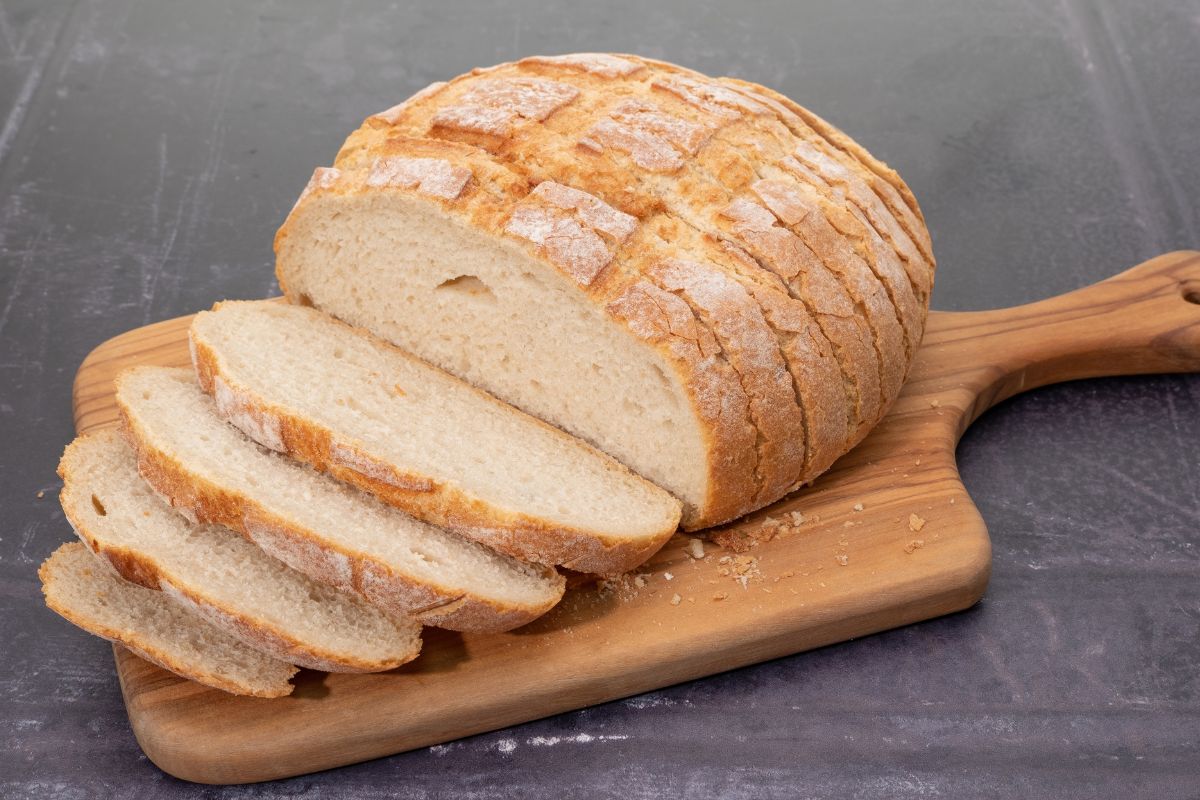Sheepherder Bread, or Basque Sheepherder Bread, has a deep history tied to the tough landscapes of the American West. Sheepherders traditionally baked this hearty loaf on long journeys. It kept them strong during tough conditions. Today, it remains a beloved recipe that combines simplicity with robust flavor.
Origin
Sheepherder Bread has its origins in the Basque region of Spain. The Basque people, also known as Euskaldunak, inhabit a unique area that straddles the border between Spain and France. Their rich cultural heritage, distinct language (Euskara), and culinary traditions have left an indelible mark on the world.
The Basque People’s History
The Basque people have a long history dating back thousands of years. Their resilience, independence, and strong sense of identity have shaped their way of life. Traditionally, they were primarily shepherds, fishermen, and farmers. Their connection to the land and their flocks is deeply ingrained.
The Sheepherders and Their Bread
In the early 1900s, many Basque immigrants made their way to the United States, particularly to the American West. These immigrants brought with them their culinary traditions. including the recipe for Sheepherder Bread. As they tended their sheep across vast landscapes, they needed a durable and filling bread to sustain them during long hours of work. Thus, Sheepherder Bread became a staple in their diet.
The Bread Itself
Sheepherder Bread is rustic, hearty, and straightforward. It’s made with minimal ingredients, emphasizing practicality over extravagance. Traditionally, it was baked in cast-iron Dutch ovens, which were readily available to the sheepherders. The bread rises beautifully inside the oven, filling it with wide, thick slices that provide sustenance for their demanding lifestyle.
Ingredients
- ½ cup (1/4 lb.) butter, margarine, or shortening
- ½ cup sugar
- 2 ½ teaspoons salt
- 2 packages active dry yeast
- About 9 ½ cups all-purpose flour
- Salad oil (for greasing)
Instructions
- In a large bowl, combine 3 cups very hot tap water with butter, sugar, and salt. Stir until the butter
- melts, then let it cool until warm (110° to 115°).
- Stir in the yeast, cover the bowl, and set it in a warm place until bubbly (about 15 minutes). Add 5 cups of flour and beat with a heavy-duty mixer or spoon until the batter is stretchy (2 to 5 minutes).
- Mix in enough of the remaining flour (about 3 ½ cups) to form a stiff dough.
- Knead the dough using a dough hook or by hand until smooth (about 5 minutes with the dough hook or 10 minutes by hand).
- Rinse the bowl, rub it with oil, and return the dough to the bowl.
- Turn it over to coat it with oil. Cover the bowl with plastic wrap and let the dough rise in a warm place until doubled (about 1 ½ hours).
- Prepare a 5-quart cast-iron Dutch oven by lining the bottom with foil and greasing it with salad oil (a nonstick pan needs no preparation).
- Knead the dough again to expel air and form it into a smooth ball.
- Place the dough in the baking pan, cover loosely with plastic wrap, and let it rise until almost doubled again (45 minutes to 1 hour).
- Bake, uncovered, in a 350°F oven until the loaf is golden brown and sounds hollow when tapped (50 to 55 minutes).
- Remove the bread from the oven, invert it onto a rack, remove the foil, and turn the loaf right side up.
- Cool for at least 45 minutes before serving warm or cool, cut into wedges.
Chef’s Notes
- Anita Mitchell won the bread-baking contest at the National Basque Festival in Elko, Nevada, in 1975 with this loaf.
- While she used a cast-iron Dutch oven, a nonstick pan makes handling the bread easier.
- You can bake the loaf up to 1 day ahead and store it covered at room temperature or freeze it for longer storage.
Nutrition Facts (per ounce)
- Calories: 94
- Protein: 2.1g
- Fat: 1.9g
- Saturated Fat: 1g
- Carbohydrates: 17g
- Fiber: 0.6g
- Sodium: 108mg
- Cholesterol: 4.1mg
Conclusion
Sheepherder Bread originated in the Basque region of Spain. spread over countries and generations to become a valued favorite. The bread’s simplicity and efficiency made it essential for Basque sheepherders in the harsh American West.
Today, its rich history and savory character are treasured by cooks. all around the world, helping to preserve an individual culinary culture. Sheepherder Bread shows the Basque people’s rich legacy and creative spirit. It can be made in a classic cast-iron Dutch oven or a modern nonstick pan.
Tags: Basque Sheepherder BreadFood RecipeSheepherder Bread

